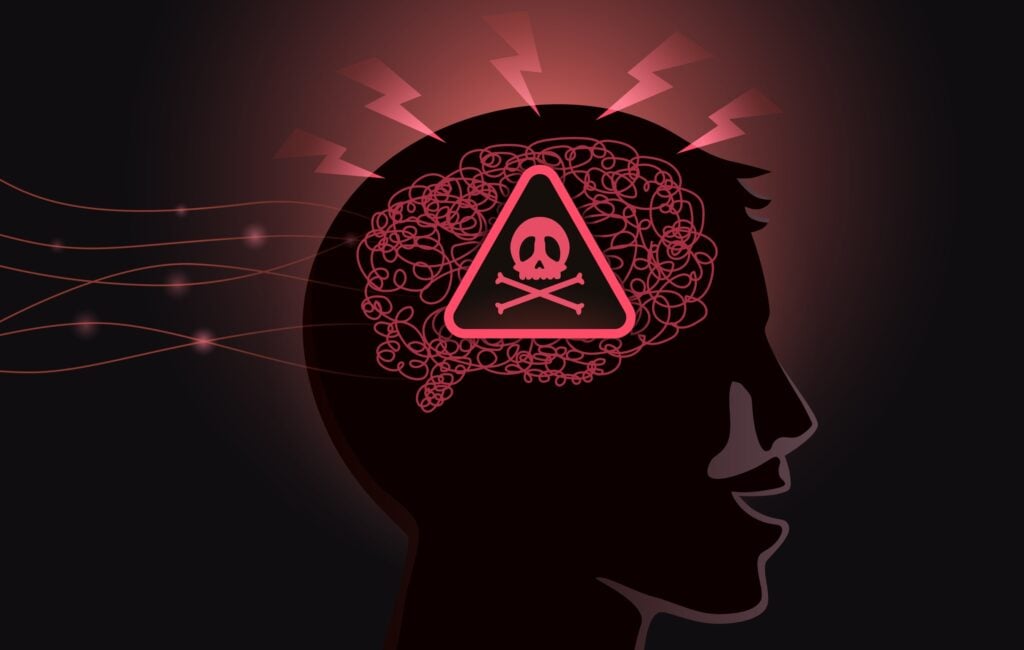If we were to explore the meaning of “enabler” or “enabling” from a purely semantic perspective, we can see that it means “to make it possible for someone to do something”. Modern psychology narrows this definition down even further as “making it (directly or indirectly) possible for someone to continue engaging in an unhealthy behavior”.
Initially, enabling was closely related to the families of individuals suffering from some form of Substance Use Disorder (SUD), such as drug or alcohol addiction. Within these circles, there’s a noticeable pattern, where family members (or other individuals close to the addicted person) try to justify, excuse, or even blatantly deny and ignore the existence of harmful behavior.
However, in recent years, it has become apparent that being an enabler is not exclusive to cases of SUD. Rather, it is applicable to interpersonal relationships as a whole, whether they be professional, academic, or romantic.

What Is Toxic Enabling?
In modern times, “toxic enabling” refers to behaviors or patterns that directly or indirectly perpetuate and sustain unhealthy actions within a relationship. It typically occurs when one person (“enabler”) actively or passively supports or, even, facilitates the destructive actions of another person (“enabled” or “toxic” individual).
As such, to enable someone means to proverbially add rocket fuel to their campfire, allowing destructive behavior to persist and flourish. At the same time, it stunts the personal growth of both individuals, trapping them in a vicious cycle of dysfunction and codependency, making it difficult to even ask for help, let alone set on the path to recovery.
What Is An Enabler In A Toxic Relationship?
In this context, an enabler is any person who takes on a supportive or protective role toward a toxic individual. This can be a friend, family member, romantic partner, or any other person from an enabled individual’s vicinity.
Being an enabler, an individual will often go to great lengths to justify the toxic person’s behavior, make excuses for their actions, and shield them from the consequences of their own decisions. However, in doing so, they’re inadvertently reinforcing the negative patterns that need changing.
One thing must be noted here. Enablers may not be aware of their enabling behavior. Their actions are seldom thought out and hardly ever malicious. Rather, they stem from strong emotions, such as love, fear, or a genuine desire to help and empower, but may also be a result of a (misplaced) sense of responsibility.
Unfortunately, when it comes to the enabled individual, the situation can turn into the complete polar opposite. A toxic person may (and often, does) turn their partner’s caretaking tendencies into a tool of manipulation, driving the enabler to even further commit to their misbegotten goal.
This can have profound and lasting negative effects on the enabling individual. As such, it is imperative to learn to recognize the signs and patterns that typically accompany the role of enabler in a relationship.
What Are The Signs Of Toxic Enabling?
Identifying enabling patterns is not easy, especially if you’re the one being the enabler. The cues of this behavior are subtle and not immediately apparent. However, if you know exactly what you’re looking for, they become more than obvious. Here’s what you need pay attention to:
- Rationalization: As we’ve mentioned, enablers will often try to justify, downplay, or make excuses for their partner’s harmful behavior, sometimes even blaming their actions on external factors;
- Self-sacrifice: Putting a partner’s needs and desires above one’s own, even to the detriment of personal mental and physical well-being is a tell-tale sign of codependency, which can be considered one of the basis of enabling behaviors;
- Self-neglect: To be able to enable someone else, a person usually must put their dreams, interests, hobbies, and goals on the back burner;
- Conflict avoidance: Enablers often go to great lengths to avoid conflict or confrontation with their toxic counterpart. This may involve keeping secrets, excessive apologizing, walking on eggshells, and pretending that everything is peachy when, in reality, it is the exact opposite;
- Caretaking: To an extent, an enabler may view their partner as “helpless”. This can cause them to take an enormous amount of responsibility for themselves and in virtually every aspect of their life and relationship;
- Perpetuating dependency: By continually providing moral, emotional, financial, or any other form of support that allows for the continuation of destructive behavior, enablers foster further dependency in the toxic individual;
The Meaning Of Being An Enabler
From the aforementioned factors (or, rather, as their result), we can derive three more characteristics of enabling behavior:
- Stagnant relationship: Points #1, 4, 5, and 6 show us that this type of relationship is nigh impossible to move from a dead point:
- A toxic individual gets everything they need from the enabler, virtually without having to lift a finger or take on even a minor amount of responsibility;
- Conflict resolution, which is one of the bases of a healthy relationship, is non-existent, since the enabler will go to great lengths to avoid conflict.
- Stunted personal growth: From points #2, 3, 4, and 5, we can conclude that the enabler won’t move from a dead point either, much as their relationship, as all of their time and energy is spent caring for the toxic individual.
- Perpetual turmoil: Finally, from everything mentioned up until now, it’s easy to see how being an enabler can negatively impact every aspect of a person’s well-being, including their physical, mental, and emotional health.
How Do You Deal With Toxic Enablers?
Breaking the cycle of dysfunction is no easy task, regardless of the type of dysfunction in question. However, you can initiate a positive change by:
- Practicing self-reflection & self-care;
- Seeking support, both from family and friends, as well as professionals;
- Encouraging the other person to seek professional help (especially if they’re struggling with addiction or a mental health issue).
In severe cases, breaking away from the relationship for a period of time is the only option to begin help. Difficult as it may be to grasp, sometimes the toxic person doesn’t want change or to change. If that is the case, the best (and only thing) you can do is prioritize your own well-being.
Turn To PIVOT & Learn How To Deal With Enabling In A Relationship

If you’ve recognized that you’re being an enabler in a relationship, or if you’ve noticed this harmful pattern in someone close to you, know that the solution is within reach. With PIVOT’s help, it is possible to learn to break free from this toxic behavior.
At our state-of-the-art Glass House Retreat, you’ll have access to a variety of workshops led by experienced and knowledgeable professionals who put your well-being first. Whether you decide on group or one-on-one coaching sessions, we’ll be here to provide compassionate guidance throughout your journey to recovery.
Are you ready to break harmful habits and open yourself up to the whole world of healthy relationships? Reach out to us today, apply for one of our tailored programs, and embrace the opportunity to grow in the best way possible!